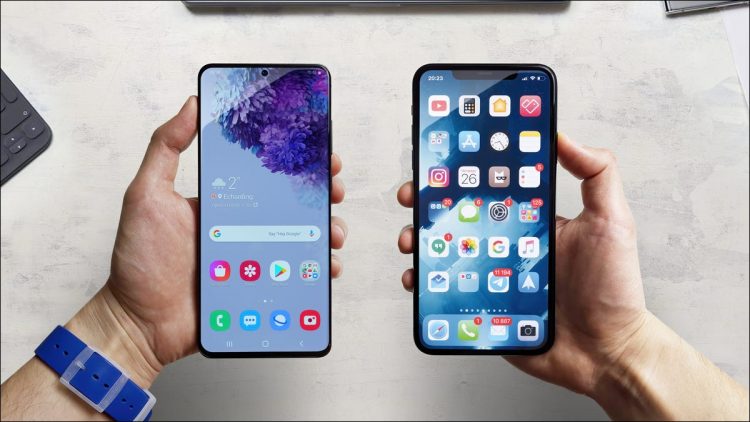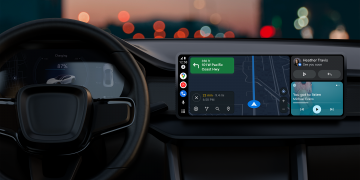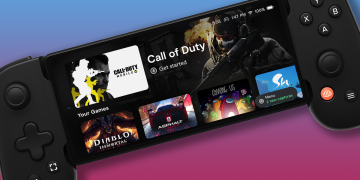The iPhone and Android phones have more in common than ever, but they’re also still very different on many levels. There are some unique iPhone features that we would love to see on Android. Could it happen?
Focus Modes
 Khamosh Pathak / How-To Geek
Khamosh Pathak / How-To Geek
Focus on the iPhone is essentially specialized Do Not Disturb modes for specific situations. Android has a feature called “Focus Mode,” but it’s very different. Android also only really has one “Do Not Disturb” mode.
It’s handy to be able to create specialized “Do Not Disturb” modes for different situations. You can make one for work, fitness, reading, dates, and more. In each Focus mode that you create, you decide which people and apps can bother you.
Shortcuts Automations
Introduced in iOS 12, “Shortcuts” is a nifty automation feature for the iPhone. To be completely honest, Shortcuts seems like something that would have come to Android first. It’s a pretty “techy” feature that can do some powerful things.
The idea of having a built-in app that you can use to create routines, automations, and custom shortcuts is great. Of course, there are plenty of third-party Android apps that can do these things, but having it built-in makes it more accessible.
Face ID

Face ID was released in 2017, and Android still doesn’t have a comparable feature. Sure, there have been Android phones with “Face Unlock,” but it’s never as good or as secure as Face ID on the iPhone.
I never realized how great Face ID is until I used an iPhone for a while. A fingerprint scanner is certainly nice, but there’s just something about seeing the lock icon unlock as you pull out your phone and look at it. The fact that it’s secure enough to be used with mobile payments is the icing on the cake.
RELATED: Why Face ID Is Much More Secure Than Android’s Face Unlock
Separate the Notifications & Quick Settings

Notifications on the iPhone are a bit of a mess, but there’s one thing about it that Apple has gotten right—splitting up the Notification Center and Control Center.
The Notification Center is opened by swiping down from the top left of the screen. The Control Center—comparible to Android’s Quick Settings—is opened by swiping down on the top right. You don’t have to swipe down twice to see all the toggles like you do on Android. You can be more direct with which thing you want to open.
RELATED: Android Notifications Are Still Miles Ahead of the iPhone
Shake to Undo

Typing on a smartphone keyboard—whether it’s iPhone or Android—can be a pain. We all make mistakes, but the handy Ctrl+Z keyboard shortcut isn’t there to help. The iPhone solves this problem with “Shake to Undo.”
It works exactly how it sounds. After you type something, simply shake your phone, and a message will pop up and ask if you want to “Undo Typing.” Easy as that. On Android, you have to resort to some less than ideal methods.
RELATED: How to Undo Typing on a Samsung Galaxy Phone
Spotlight Search

The iPhone has a pretty amazing system-wide search feature called “Spotlight.” It doesn’t just search for apps or contacts on your phone, it can search inside apps, messages, photos, notes, and the web.
For example, a simple Spotlight search for “sleep” pulls up search suggestions from Siri, photos from Google Photos, photos in the Messages app, a Google Keep list, a text message from a conversation that mentioned “sleep,” a calendar event, the dictionary definition of “sleep,” and shortcuts to search in the App Store or Maps.
Android doesn’t have a universal tool like this. Samsung and Google have system-wide search tools, but they’re not nearly as good as Spotlight.
RELATED: How to Do a System-Wide Search on a Samsung Galaxy Phone
“Universal” Communication Apps

Lastly, there’s one thing Apple has nailed down that Android has been desperately trying to replicate for years: communication apps. iMessage and FaceTime on the iPhone are essentially unrivaled.
Technically, you can use FaceTime on Android (and iMessage if you’re committed), but that’s beside the point. One company forcing its services on everyone is a bit against the spirit of Android, but Google already does that a lot. It’s time for Google to take some control.
Google’s Messages app is very good. Its video calling app is also very good. Let’s make these apps the standard, built-in methods that all Android users have. It would make communication much easier if you knew how to message or video call every other Android user.
RELATED: How to Use iMessage on Android and Windows
Will Android ever get these features? Some are more realistic than others, but we can dream. There’s value in the two platforms having different approaches, but some ideas are too good to be kept to yourself.
Source by www.howtogeek.com






























